Lidar and perception startup Innoviz raises $132 million
Innoviz, the Israel-based startup developing solid-state lidar sensors and perception software for autonomous vehicles, has raised $132 million in a Series C funding round that includes major Chinese financial institutions.
The round, which makes Innoviz one of the better capitalized lidar startups, includes China Merchants Capital (SINO-BLR Industrial Investment Fund, L.P.), Shenzhen Capital Group and New Alliance Capital. Israeli institutional investors Harel Insurance Investments and Financial Services and Phoenix Insurance Company also participated.
The Series C round will remain open for a second closing to be announced in the coming months, the company said.
Lidar measures distance using laser light to generate highly accurate 3D maps of the world around the car. It’s considered by most in the self-driving car industry a key piece of technology required to safely deploy robotaxis and other autonomous vehicles. Innoviz is developing solid-state lidar, which proponents of this technology say is more reliable over time because of the lack of moving parts.
Like so many startups with fresh capital, Innoviz plans to use the funds to scale up the company.
For Innoviz, this means increasing production of its lidar sensors and expanding its manufacturing capacity. Innoviz is focused on expanding in important automotive markets, including the U.S., Europe, Japan and China. Innoviz has been pushing into China over the past year through a partnership with the Chinese automotive supplier HiRain Technologies, a global supplier to some of China’s largest automakers.
That company has half of its business coming from China and has won nine of its supplier agreements with different automakers in the country through its HiRain partnership, according to people with knowledge of the company.
The company’s aim is to enable high-volume delivery of its automotive-grade lidar system called InnovizOne. This product can be produced and sold at a 90 percent lower cost than its first-generation system, according to Innoviz.
Innoviz said it also plans to expand its research and development efforts by investing in the buildout of next-generation products and software that will feature more cost reductions and improved performance.
Innoviz’s strategy has been to partner with a number of OEMs and Tier 1 suppliers such as Magna, HARMAN, HiRain Technologies and Aptiv and to package perception software with its lidar sensors and offer it as a complete unit for companies developing autonomous vehicle technology.
Innoviz has locked in several key customers, notably BMW. The automaker picked Innoviz’s tech for series production of autonomous vehicles starting in 2021.
In March, Lyft announced a partnership with Magna to help get its self-driving tech into various automakers, as well as implement the ride-hailing service into future autonomous cars. Innoviz raised $65 million in Series B funding in 2017, from strategic partners and leading auto industry suppliers Delphi Automotive and Magna International, along with other investors.
Powered by WPeMatico
Lola.com raises $37M to take on SAP and others in the world of business travel
Business customers continue to be a huge target for the travel industry, and today a startup has raised a tidy sum to help it double down on the $1.7 trillion opportunity. Lola.com — a platform for business users to book and manage trips — has raised $37 million to continue building out its technology and hire more talent as it takes on incumbents like SAP targeting the corporate sector.
The Series C is led by General Catalyst and Accel, with participation from CRV, Tenaya Capital and GV. All are previous investors. We are asking about the valuation but it looks like prior to this, the company had raised just under $65 million, and its last post-money valuation, in 2017, was $100 million, according to PitchBook.
“We’re happy with our valuation and think it provides a good balance between recognizing our progress growing the business and protecting employees equity by keeping a reasonable valuation,” said Mike Volpe, who took over last year as CEO, in an email to us. “We prioritize our team over everything else and we’re not going to raise too much money at overly high valuations that make it hard for employees to make money on their equity.”
There are signs that the valuation will have had a bump in this round. The company said in 2018, its bookings have gone up by 423 percent, with revenues up 786 percent, although it’s not disclosing what the actual figures are for either.
“As business travelers have become increasingly mobile, Lola.com’s mission is to completely transform the landscape of corporate travel management,” said Volpe. “The continued support of our investors underscores the market potential, which is leading us to expand our partner ecosystem and double our headcount across engineering, sales and marketing. At the core, we continue to invest in building the best, simplest corporate travel management platform in the industry.”
Co-founded by Paul English and Bill O’Donnell — respectively, the former CTO/co-founder and chief architect of the wildly successful consumer travel booking platform Kayak — Lola originally tried to fix the very thing that Kayak and others like it had disrupted: it was designed as a platform for people to connect to live agents to help them organise their travel. That larger cruise ship might have already said, however (so to speak), and so the company later made a pivot to cater to a more specific demographic in the market that often needs and expects the human touch when arranging logistics: the business user.
Its unique selling point has not been just to provide a pain-free “agile” platform to make bookings, but for the platform’s human agents to be proactively pinging business users when there are modifications to a booking (for example because of flight delays), and offering help when needed to sort out the many aspects of modern travel that can be painful and time consuming for busy working people, such as technical issues around a frequent flyer program.
Lola.com is not the only one to spot the opportunity there. To further diversify its business and to move into higher-margin, bigger-ticket offerings, Airbnb has also been slowly building out its own travel platform targeting business customers by adding in hotels and room bookings.
There are others that are either hoping to bypass or complement existing services with their own takes on how to improve business travel such as TravelPerk (most recent raise: $44 million), Travelstop (an Asia-focused spin), and TripActions (most recently valued at $1 billion), to name a few. That speaks to an increasingly crowded market of players that are competing against incumbents like SAP, which owns Concur, Hipmunk and a plethora of other older services.
Lola.com has made some interesting headway in its own approach to the market, by partnering with one of the names most synonymous with corporate spending, American Express, and specifically a JV it is involved in called American Express Global Business Travel.
“Lola.com offers an incredibly simple solution to corporate travel management, which enables American Express Global Business Travel to take our value proposition to even more companies across the middle market,” said Evan Konwiser, VP of Product Strategy and Marketing for American Express GBT, in a statement.
Powered by WPeMatico
Huawei announces smart glasses in partnership with Gentle Monster
Huawei is launching connected glasses in partnership with Gentle Monster, a Korean sunglasses and optical glasses brand. There won’t be a single model, but a collection of glasses with integrated electronics.
Huawei is positioning the glasses as a sort of earbuds replacement, a device that lets you talk on the phone without putting anything in your ears. There’s no button on the device, but you can tap the temple of the glasses to answer a call for instance.
The antenna, charging module, dual microphone, chipset, speaker and battery are all integrated in the eyeglass temple. There are two microphones with beam-forming technology to understand what you’re saying even if the device is sitting on your nose.
There are stereo speakers positioned right above your ears. The company wants you to hear sound without disturbing your neighbors.
Interestingly, there’s no camera on the device. Huawei wants to avoid any privacy debate by skipping the camera altogether. Given that people have no issue with voice assistants and being surrounded by microphones, maybe people won’t be too suspicious.

The glasses come in a leather case with USB-C port at the bottom. It features wireless charging as well. Huawei teased the glasses at the P30 press conference in Paris, but the glasses won’t be available before July 2019.
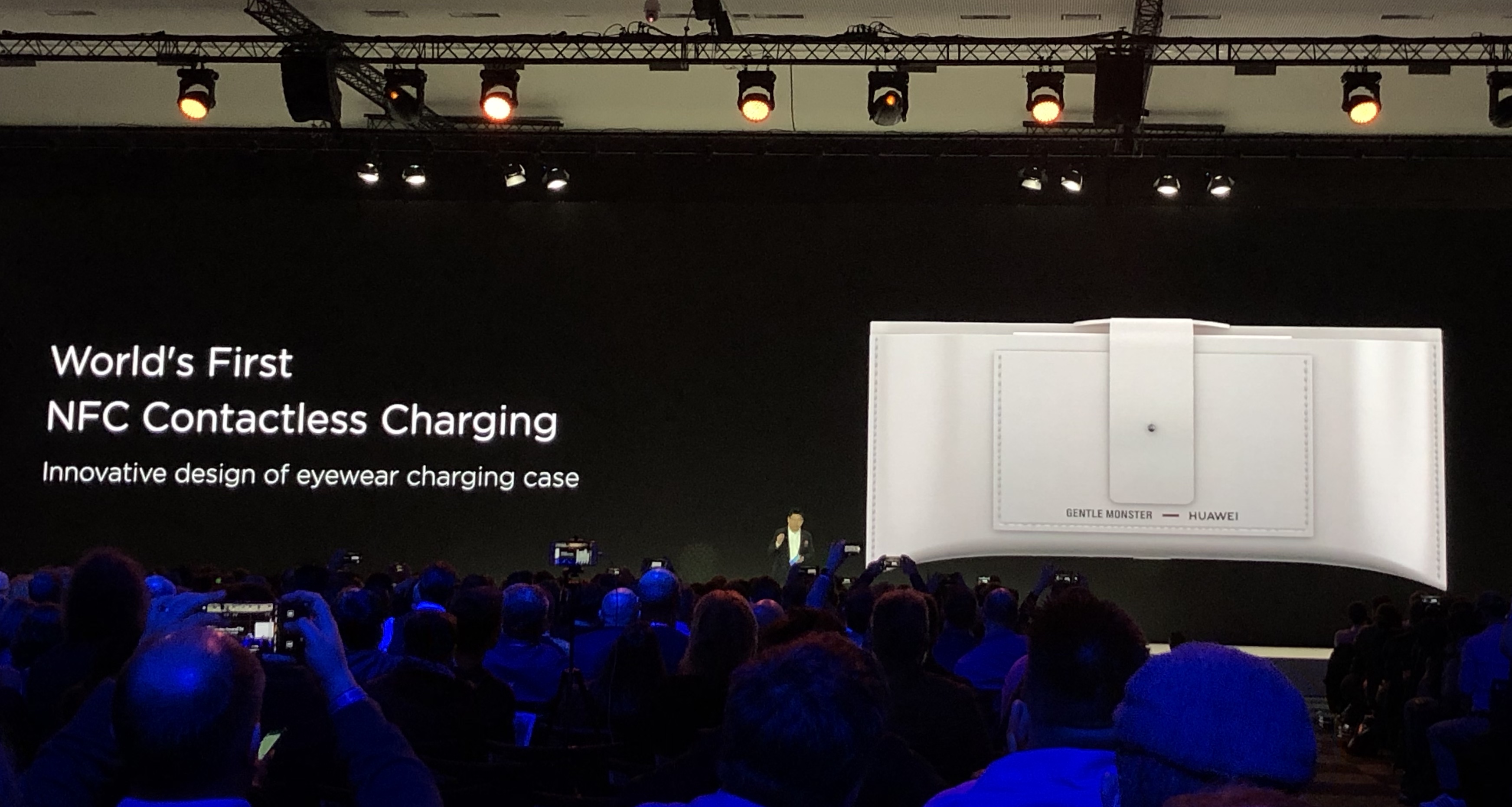
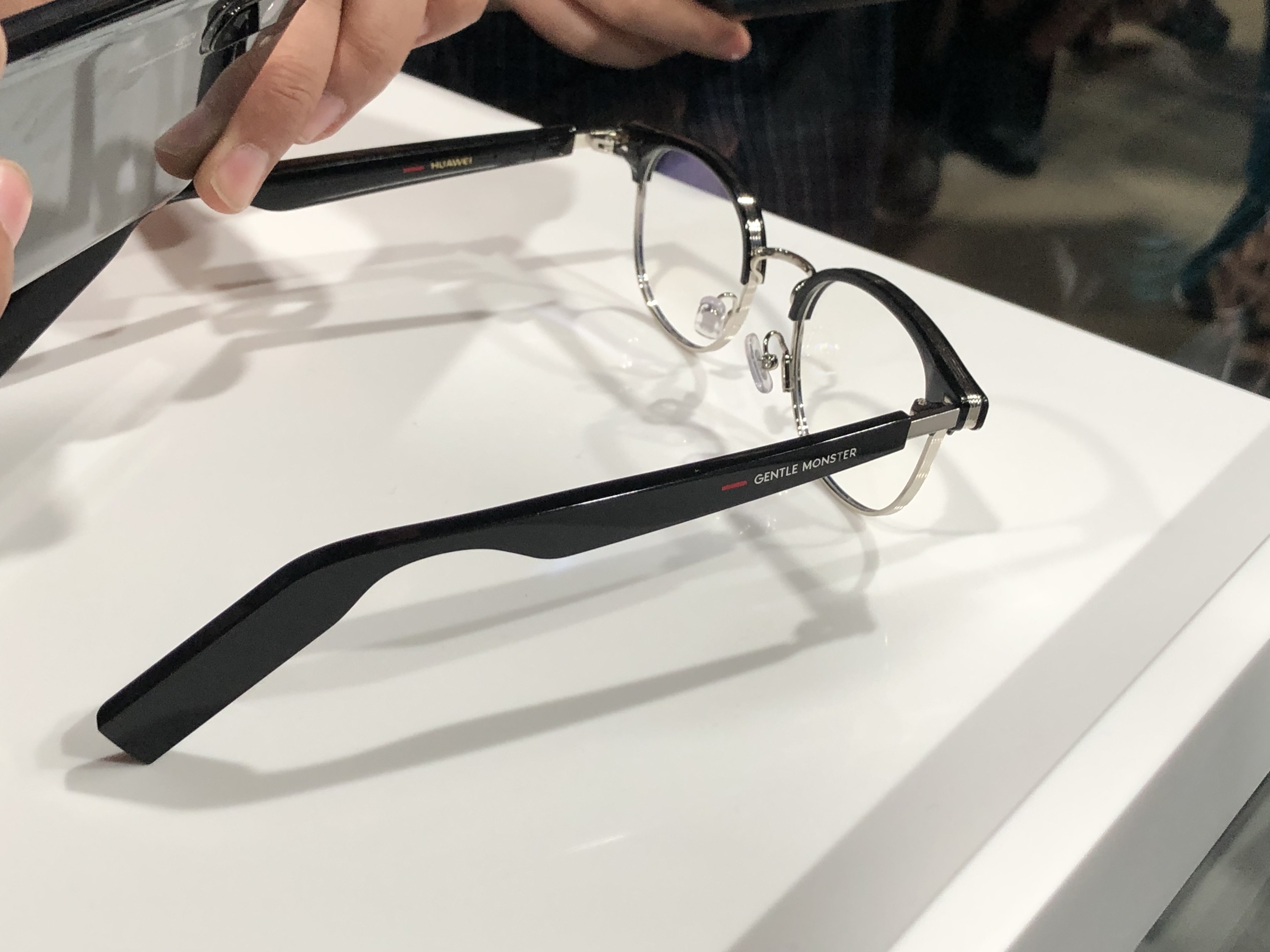
Powered by WPeMatico
Australian influencer marketing startup Tribe raises $7.5M as it eyes US expansion
Tribe, which helps brands acquire content from so-called “micro-influencers,” has raised $7.5 million in Series A funding.
The startup was founded in Australia in 2015 by TV and radio host Jules Lund, who told me he was responding to the growing demand for branded content.
“Brands are desperate for content,” Lund said. “When you have a hundred customer profiles and the ability to be hyper personalized and targeted and social, you now need 100 beautiful pieces of content. Creative agencies can’t supply that at the right cost and the right turnaround, and stock images are the antithesis of personalization, because they don’t feature your brand.”
As for how Tribe differs from all the other influencer marketing companies out there, Lund noted that it’s a purely self-serve product, where brands post their requests — either for an “influencer campaign,” where the influencers are creating content and promoting it to their followers, or a “content campaign,” which is just about creating the content — then users submit their work and get paid if the brand decides to use it.
Plus, the brands on the platform aren’t sending free stuff to influencers who may or may not be a good fit. Instead, Tribe is connecting them with influencers who already own (and presumably like) their products.
“Tribe’s role is to simply unlock all of that branded content that sits within people’s iPhones and Samsungs,” Lund said. “The micro-influencers are looking in their pantry or their wardrobe, looking at the apps in their phones, all of these products that they already use.”
Tribe says it’s already working with brands like Unilever, L’Oréal and Marvel and generating more than $250,000 worth of branded content every day. And while the United Kingdom is currently the company’s biggest market, the United States already accounts for 20 percent of the more than 50,000 influencers on the platform.
With the new funding, Tribe is officially launching in the U.S. and opening an office at One World Trade Center in Manhattan, which will be led by CEO Anthony Svirskis. He said the money will also allow Tribe to continue investing in its product.
“With TRIBE we’re finally seeing influencer marketing done right,” said Chris Burch, founder and CEO of investor Burch Creative Capital, in a statement. “The U.S. market has been waiting for a tech platform like this for years and as soon as we heard they were launching stateside, we knew we needed to be a part of it.”
Powered by WPeMatico
Adobe and Salesforce announce Customer Data Platforms to pull data into single view
Marketing analytics is an increasingly complex business. It’s meant to collect as much information as possible across multiple channels from multiple tools and provide marketers with as complete a picture of their customers and their experience in dealing with you as possible. Perhaps not coincidentally, Adobe, which is holding its Adobe Summit this week in Las Vegas, and Salesforce both made Customer Data Platform (CDP) announcements this week.
The Customer Data Platform is a complex construct, but it’s basically a marketer’s dream, a central database that pulls customer data from a variety of channels and disparate data sources to give marketeers deep insight into their customers, all with the hope of gathering enough data to serve the perfect experience. As always, the ultimate goal is happy repeat customers, who build brand loyalty.
It always comes down to experience for marketers these days, and that involves serving up the right kind of experience. You don’t want the first-time visitor to have the same experience as a loyal customer. You don’t want a business customer to have the same experience as the consumer. All of that takes lots and lots of information, and when you want to make those experiences even more personalized in real time, it’s a tough problem to solve.
Part of the problem is that customers are working across multiple channels and marketers are using multiple tools from a variety of vendors. When you combine those two problems, it’s hard to collect all of the data on a given customer.
The process is a bit like boiling, the ocean and to complicate matters even further, it involves anonymized data and non-anonymized data about customers being stored in the same database. Imagine those two elements being hacked. It wouldn’t be pretty, which is just one reason that these kinds of platforms are so difficult to build.
Yet the promise of having a central data hub like this is so tantalizing, and the amount of data growing so quickly, that having a tool to help pull it all together could have great utility for marketers. Armed with this kind of information, it could enable marketers to build what Salesforce’s Bob Stutz called “hyper-targeted messages” in a blog post yesterday.
Stutz used that same blog post to announce Salesforce’s CDP offering, which is not the same as the Customer 360 product announced at Dreamforce last year, although you would be forgiven for confusing the two. “Salesforce Customer 360 helps companies easily connect and resolve customer data across Salesforce and 3rd party applications with a single customer ID. Our Customer Data Platform builds on this unified identity foundation to deliver a ‘single view of the customer’ for marketing professionals,” Stutz wrote.
Adobe, which announced its CDP use case today, sees it in somewhat similar terms, but its approach is different, says Matt Skinner, product marketing manager for the Adobe Audience Manager product. For starters, it’s powered by the Adobe Experience Platform and “brings together known and unknown data to activate real-time customer profiles across channels throughout the customer journey,” Skinner said. In addition, he says it can use AI to help build these experiences and augment marketer ideas.
Both companies have to pull in data from their own systems, as well as external systems, to make this work. That kind of integration problem is one of the reasons Salesforce bought MuleSoft last year for $6.5 billion, but Skinner says that Adobe is taking its own open API approach to the problem. “Adobe’s platform is open and extensible with APIs and an extensive partner ecosystem, so data and applications can really come from anywhere,” he said.
Regardless, both vendors are working hard to make this happen, and it will be interesting to see how each one plays to its strengths to bring this data together. It’s clearly going to be a huge data integration and security challenge, and both companies will have to move carefully to protect the data as they build this kind of system.
Powered by WPeMatico
The updated Apple News app kept crashing for some users this morning
Update: The issue appears to have been fixed.
While you’ll have to wait for a not-yet-announced date to pay a not-yet-announced price for several of the subscription services that Apple announced yesterday, Apple News+ actually launched pretty quickly … and then started crashing.
At least, that was my experience this morning after I updated my iPad to iOS 12.2, then reinstalled and opened the News app. The app started loading, then kicked me out a few seconds later. Then it did it again, and again, and again.
It’s not clear how widespread the issue is, but my colleague Matt Burns had a similar experience on his iPhone 8, and a number of other users seem to be tweeting about their own crashes on iPads, iPhones and Macs.
Wow, Apple News is instant crash this AM for a bunch of us.@AppleNews
If I cancel my sub will it start working again? pic.twitter.com/mLAWgsMzyb— Ty Graham (@tygraham) March 26, 2019
There are, however, reports that you can circumvent the issue by immediately selecting the News+ tab and letting it load.
In fact, I managed to do that myself, so that I could sign-up for the new $9.99 subscription (which includes TechCrunch’s own Extra Crunch). I appear to have subscribed successfully — only to have the app start crashing on me again.
Not the most auspicious start for a paid product, and one that’s already spurring debate about whether or not it can help the news industry.
Why is Apple News crashing today? Why, bad data pushed to the client, of course. Should be something they can fix remotely pic.twitter.com/YS6U3DNKih
— Steve Troughton-Smith (@stroughtonsmith) March 26, 2019
Powered by WPeMatico
Huawei unveils the P30 and P30 Pro
Huawei unveiled its brand new flagship phone — the P30 and the P30 Pro — at a press conference today in Paris. In many ways, this year’s update is a continuation of the P20 series — but everything has been upgraded. I played with both devices for a bit; here’s my experience.
While Huawei’s sub-brand Honor has switched to a hole-punch design, Huawei is keeping the good old notch for its flagship device. But this year’s notch is a lot smaller. The company has switched from an iPhone X-like notch to a tiny little teardrop notch.
The P20 and P20 Pro were the last flagship phones to feature a fingerprint sensor below the display, on the front of the device. With the P30 series, Huawei is removing that odd-looking bezel and integrating the fingerprint sensor in the display.
The company could have used that opportunity to make the phones smaller. But Huawei opted for taller displays instead. The P20 and P20 Pro had 5.8-inch and 6.1-inch displays, respectively, with an 18.7:9 aspect ratio. The P30 and P30 Pro have gigantic 6.1-inch and 6.47-inch displays, respectively, with a 19.5:9 aspect ratio.
The P30 Pro is still narrower than the iPhone XR, but it won’t be for everyone. It definitely feels too big in my hand, for instance.
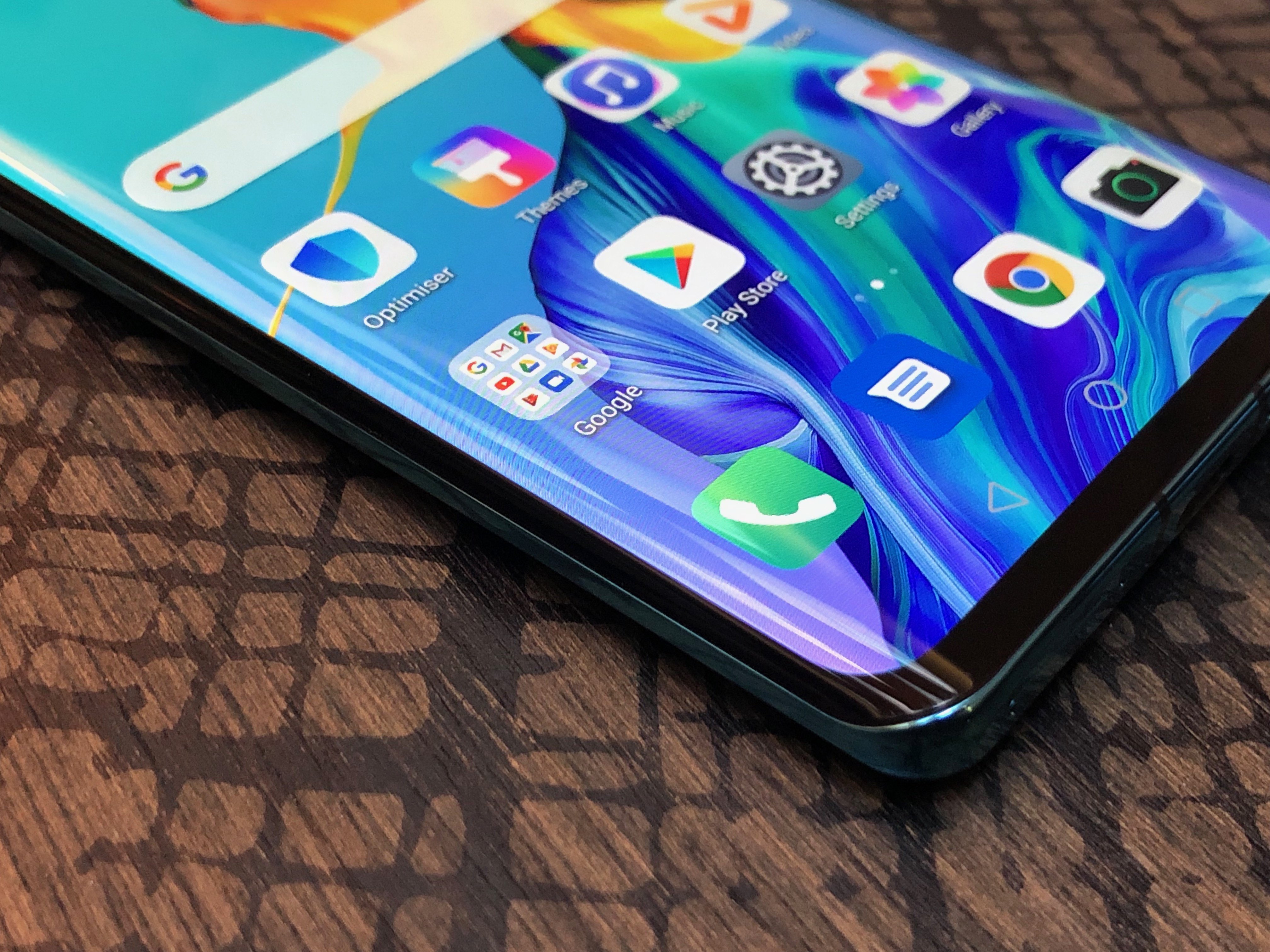
The industrial design of the P30 series is in line with the P20 series. The phones feature glass on the back with colorful gradients. The frame is made of aluminum. Overall, the devices feel slimmer on the edges thanks to curved back and front glass. The company has flattened the top and bottom edges of the devices as well. Everything feels solid in your hand.
The P30 and P30 Pro are now closer when it comes to features. They both have an OLED display with a 2340×1080 resolution for instance. You no longer have to choose between an LCD and an OLED display.

The two biggest differences you can spot is that the P30 Pro has a Samsung-style display, slightly curved on the sides — the P30 display is completely flat — and Huawei is bringing back the headphone jack, but only for the P30. It doesn’t really make sense to segment the lineup this way, but maybe Huawei considers you have enough money to buy wireless earbuds if you’re in the market for a P30 Pro.
Both devices come in five colors — Breathing Crystal, Amber Sunrise, Perl White, Black and Aurora. Amber Sunrise is a red to orange gradient color, Breathing Crystal is a white-to-purple gradient, Perl White is a white-to-slightly pink gradient, Aurora is a blue-to-turquoise gradient.
You’ll be able to buy the P30 for €799 ($900) with 128GB of storage and the P30 Pro for €999 ($1,130) for 128GB of storage — there are more expensive options for the P30 Pro with more storage. The phones will be available in Europe and Asia today, and probably won’t be released in the U.S.
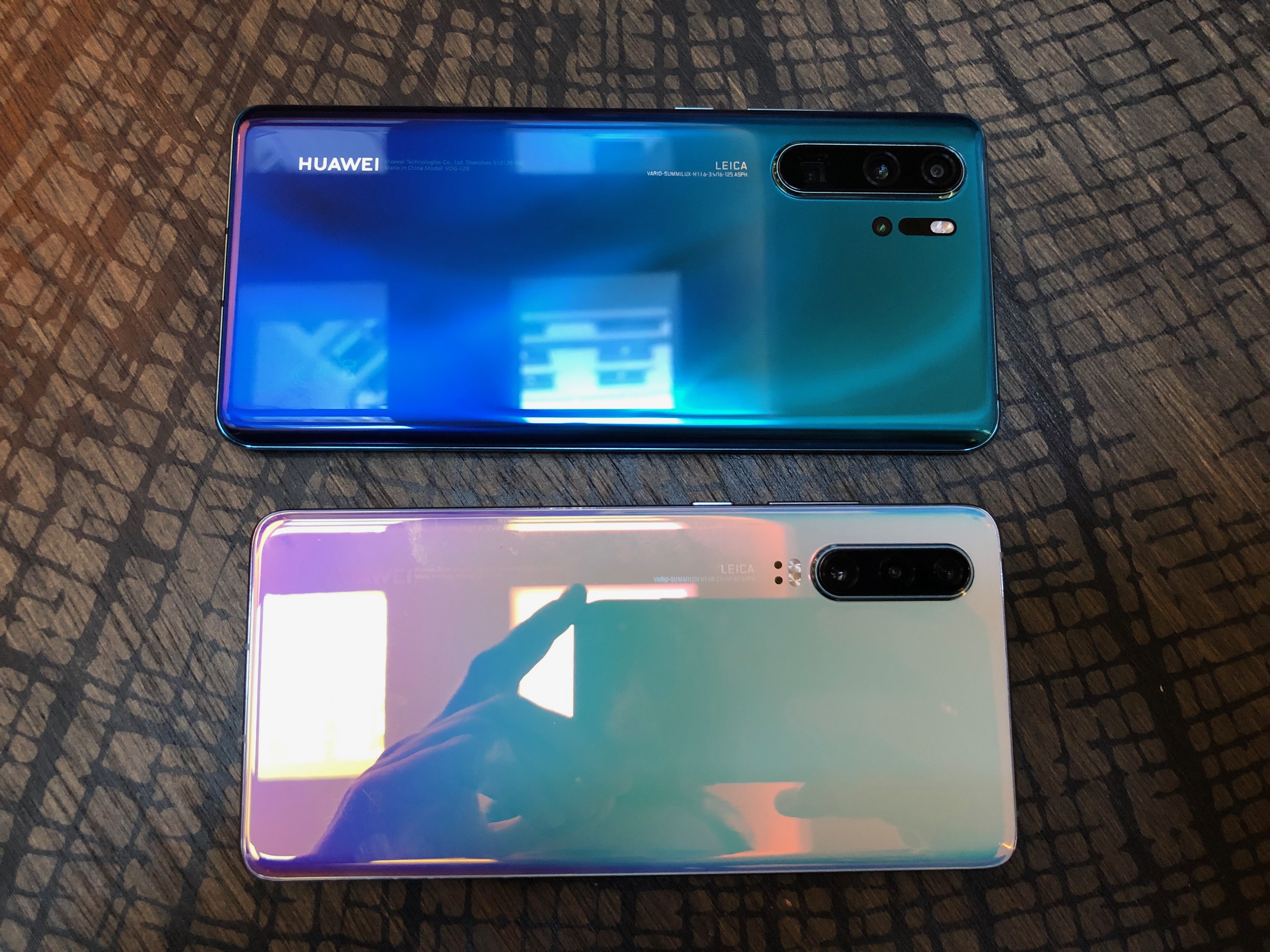
Four camera sensors, because why not
When it comes to cameras, Huawei has always been one of the leading smartphone manufacturers. There are only four brands that ship cameras that perform so well — Apple, Samsung, Google and Huawei.
It’s going to be hard to comment on the quality of the photos after so little hands-on time, but the P30 Pro now features not one, not two, not three but f-o-u-r sensors on the back of the device.

- The main camera is a 40 MP 27mm sensor with an f/1.6 aperture and optical image stabilization.
- There’s a 20 MP ultra-wide angle lens (16mm) with an f/2.2 aperture.
- The 8 MP telephoto lens provides nearly 5x optical zoom compared to the main lens (125mm) with an f/3.4 aperture and optical image stabilization.
- There’s a new time-of-flight sensor below the flash of the P30 Pro. The phone projects infrared light and captures the reflection with this new sensor.
Thanks to the new time-of-flight sensor, Huawei promises better bokeh effects with a new depth map. The company also combines the main camera sensor with the telephoto sensor to let you capture photos with a 10x zoom with a hybrid digital-optical zoom.
The telephoto lens uses a periscope design. It means that the sensor features a glass to beam the light at a right angle. Huawei uses that method to avoid making the phone too thick.
On the P30, the cameras are more or less the same, but a bit worse:
- A 40 MP main sensor with an f/1.8 aperture and optical image stabilization.
- A 16 MP ultra-wide angle lens with an f/2.2 aperture.
- An 8 MP telephoto lens that should provide 3x optical zoom.
- No time-of-flight sensor.
More than hardware specifications, Huawei says that software has been greatly improved to enhance the quality of your photos. In particular, night mode should be much better thanks to optical and software-enabled stabilization. HDR shots and portrait photos should look better too.
On the front of the device, the selfie camera sensor has been upgraded from 24 MP to 32 MP. And you can capture HDR and low-light photos from the front camera as well.
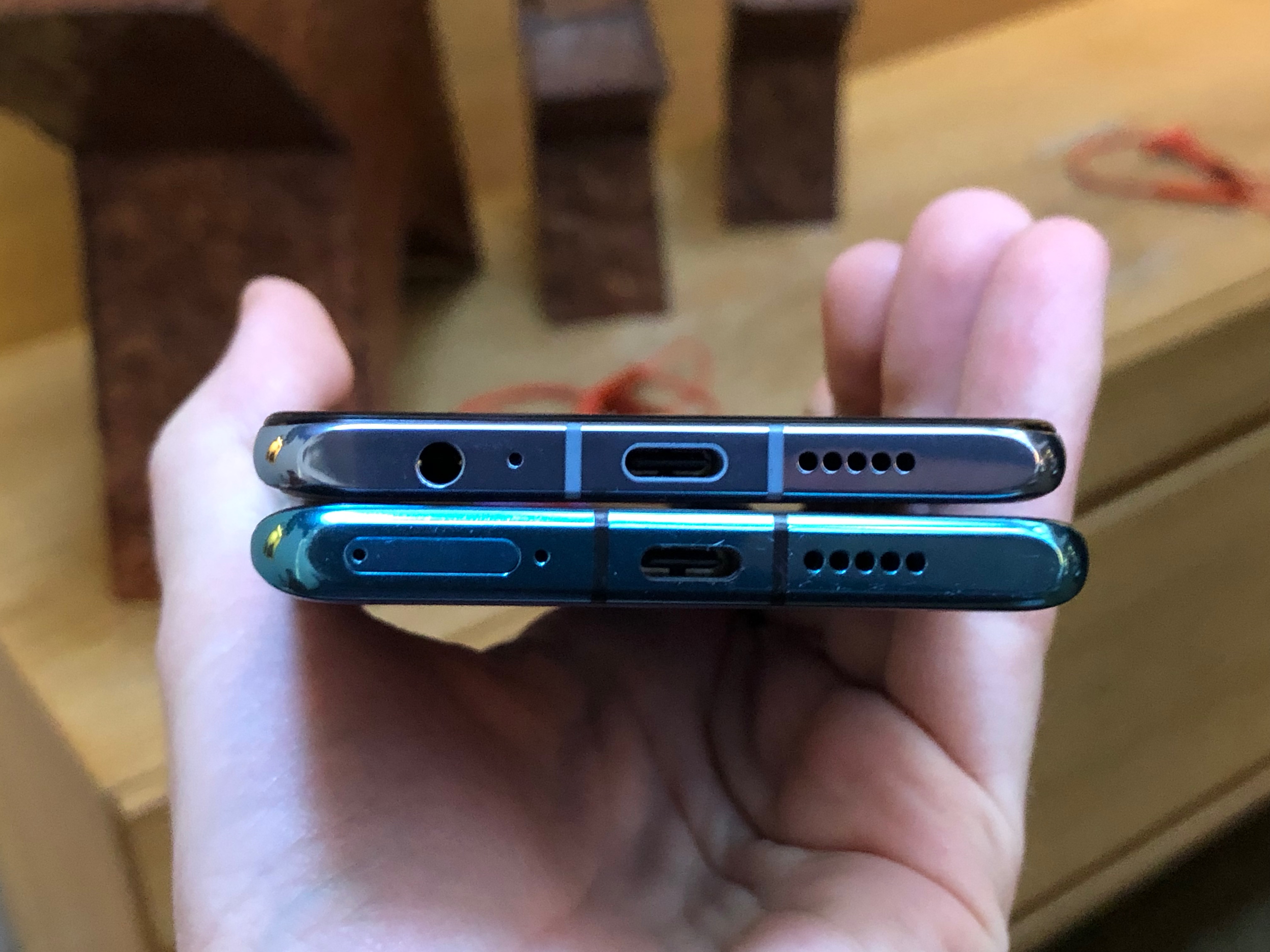
Below the surface
Huawei has upgraded its homemade system-on-a-chip with the Kirin 980 that you can find in the Mate 20 and Mate 20 Pro. It runs Android Pie 9.1 with Huawei’s EMUI custom Android user interface.
In addition to 40W USB-C charging, Huawei is integrating wireless charging for the first time in the P series (up to 15W). The P30 Pro has a 4,200 mAh battery. You can also charge other devices with reverse wireless charging, just like on the Samsung Galaxy S10.
The P30 Pro is IP68 water and dust resistant while the P30 is IP53 resistant.
You won’t find a speaker grill at the top of the P30 Pro because the company has removed the speaker. Instead, Huawei is vibrating the screen in order to turn the screen into a tiny speaker for your calls.
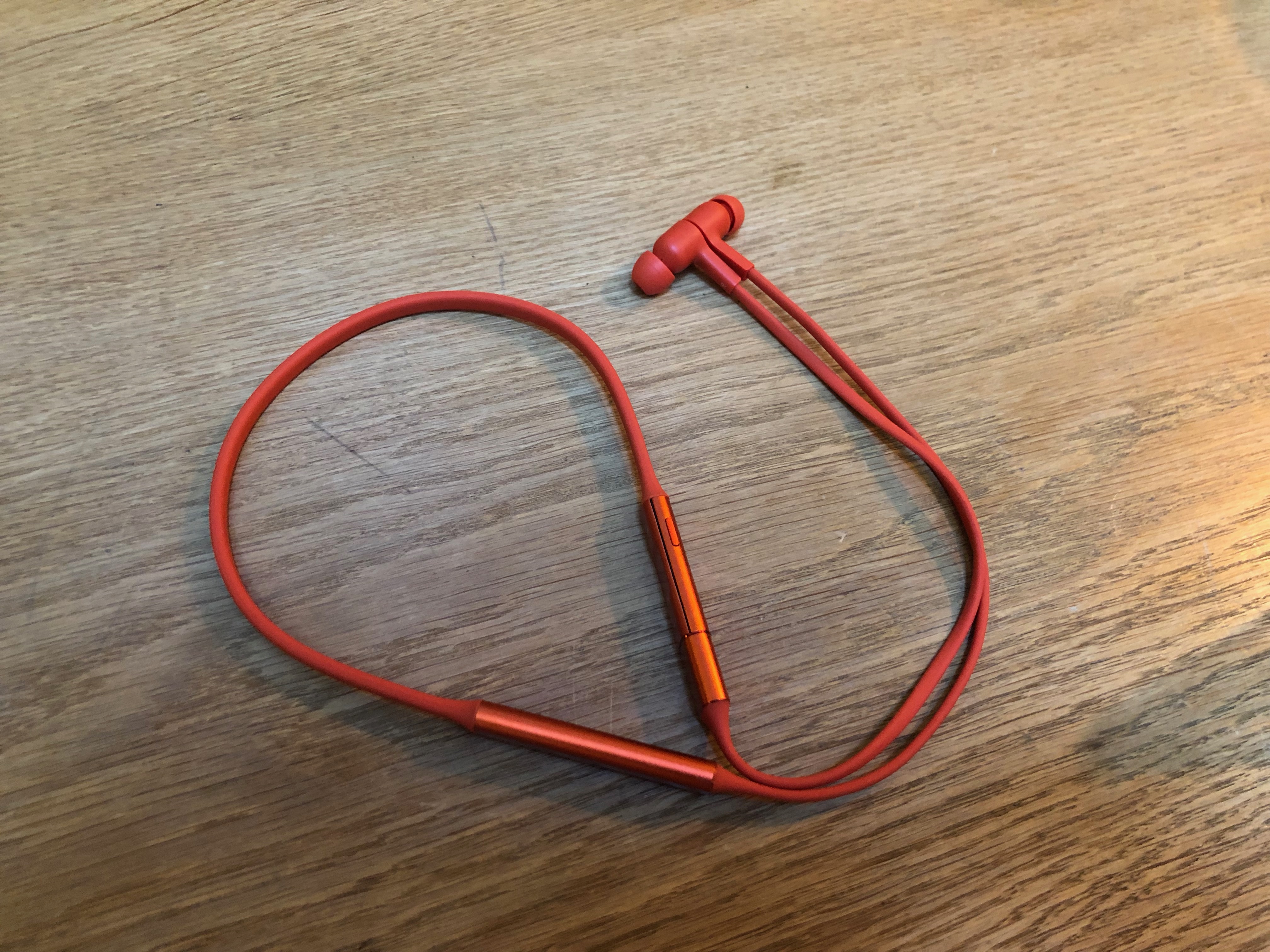
A note on the Huawei FreeLace wireless earphones
Huawei is also launching new in-ear earbuds today. The FreeLace looks more or less like the BeatsX with a cord behind your neck. You can disconnect the cord and plug your wireless earphones directly into your smartphone to pair them — no Bluetooth pairing required.
That hidden USB-C port is also how you’re going to charge the earbuds. For five minutes of charge time you get four hours worth of playback. They’ll be available in four colors — Graphite Black, Amber Sunrise, Emerald Green and Moonlight Silver.
The earbuds are magnetic so you can wrap them around your neck. When you disconnect them, it automatically answers your calls, play your music. When you connect them again, it hangs up or pauses your music. The FreeLace earbuds will be a separate accessory for €99.
Powered by WPeMatico
Hello Alfred launches new platform to reach more buildings and improve accessibility
Hello Alfred — the startup that assigns in-home assistants to take care of your recurring chores and tasks — has announced the launch of a new service tier that will provide more properties and residents with access to the company’s underlying technology.
The company, which won the Startup Battlefield competition at our 2014 Disrupt event in San Francisco, looks to unlock valuable time for users by handling the long list of small routine items that add up over the course of a week and still require human oversight.
Hello Alfred partners with building owners to provide residents with dedicated home managers that assist with various errands and on-request services, such as apartment cleaning, grocery delivery, laundry services, prescription refills and more. Users have a direct line of communication with the company’s hospitality team through Hello Alfred’s mobile app, where they can manage tasks and set recurring appointments.
The new platform, “Powered by Alfred,” acts as a fairly similar but more accessible alternative to the company’s current offering. Residents in buildings equipped with “Powered by Alfred” are given access to all of the company’s solutions with the exception of the weekly visits from dedicated home managers currently included in the existing service. By excluding the dedicated in-home service, Hello Alfred is able to offer its new service tier at a lower price point and integrate with more buildings faster.
Property owners using “Powered by Alfred” can customize packages to include the services that best fit the needs of their residents and can upgrade or change service levels at any time. Both residents and building owners using the new platform are also given more control and direct access to Hello Alfred’s proprietary technology, allowing users to control functions that normally fall under the purview of the company’s dedicated home managers.
Additionally, with the launch of the new offering, Hello Alfred will be consolidating its various solutions under one central app, where residents and building managers can handle all inquiries, appointments and payments.
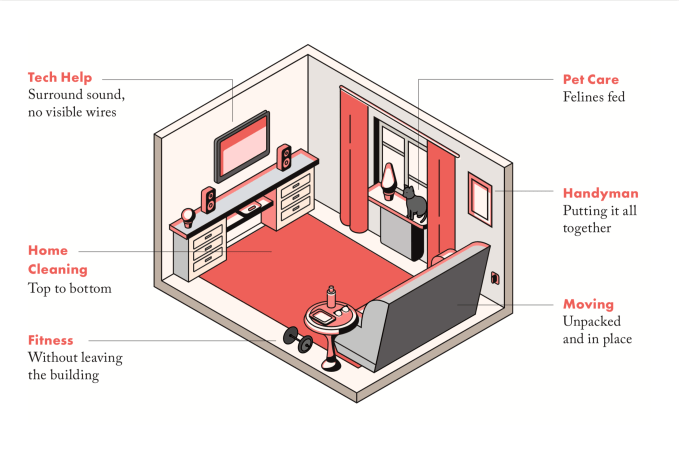
Hello Alfred’s new service tier, “Powered by Alfred,” provides a single, shared access point for resident and property owners to manage inquiries and drive property performance / Hello Alfred Press Kit
The launch of “Powered by Alfred” seems to be a natural evolution for the company, which seeks to make its offering more accessible to all residents of all backgrounds.
Hello Alfred previously employed a consumer-facing business model, in which customers would pay a monthly subscription fee for the array of in-home services and access to the company’s team of hospitality specialists, referred to as Alfreds.
However, around the time of the startup’s Series B round, Hello Alfred adopted the model of partnering directly with property owners to offer its services complimentary to residents. The partnership structure was not only a more conducive model for scaling but also enabled the company to offer the same services to any resident in an Alfred-equipped building, regardless of socioeconomic status.
Hello Alfred quickly built up a sizeable backlog of property owners hoping to integrate the platform into their units, according to the company. However, the task of maintaining dedicated staffing for every unit in every location made it difficult for the Alfred team to satisfy its swelling demand, having to instead focus resources primarily on luxury properties.
With “Powered by Alfred” removing in-home management services, the company has been able to improve accessibility and better satisfy the market’s appetite for its services, now rolling out the offering to non-luxury buildings and properties that previously sat in its pipeline.
Behind the launch of the new platform — which the company has piloted over the course of several months — Hello Alfred has increased its market share by more than 50 percent, with its services now available in more than 150,000 residential properties.
“We want Alfred to be a utility. We want to make “help” a universal utility and make it something anyone can access,” Hello Alfred CEO and co-founder Marcela Sapone told TechCrunch. “We wanted to find a way where we could accelerate growth and get human-focused help into urban buildings to help most urban environments.”
The launch represents the latest step in Hello Alfred’s broader expansion plans, which appear to have ramped up in recent months. Hello Alfred is now active in 16 cities — including Houston, where the company plans to launch next week — with its new offering available across all of its active markets. The startup already boasts an impressive partnership roster that includes more than 20 of the largest property owners in the U.S., and the Alfred team expects its new offering to open up further opportunities for partnerships across different property classes and different stages of a resident’s life cycle.
“As WeWork transformed commercial real estate, Hello Alfred is transforming residential real estate, and redefining what it means to live in a city today,” said Sapone. “This business expansion allows us to not only satisfy increasing demand for our service, but to connect every part of the resident experience — from the moment you sign your lease, until the moment you move to another Hello Alfred building.”
To date, the company has raised just over $63.5 million in venture capital, according to data from PitchBook, from prestigious investment brands that include New Enterprise Associates, Spark Capital, SV Angel, Moderne Ventures, Invesco and others.
Powered by WPeMatico
Adobe announces two new analytics tools to help marketers fill in the customer picture
Today at Adobe Summit in Las Vegas, Adobe announced some enhancements to its Analytics Suite that are supposed to help marketers understand their customers more deeply, including a new tool to track the entire customer journey, and one to help see the relationship between advertising and marketing success, which is surprisingly harder than you would think to understand.
The first is called Journey IQ, and as the name suggests, the idea is to provide a better understanding of the entire customer journey. That in itself isn’t new. It’s a task that marketing analytics vendors have been trying to solve for more than 10 years.
John Bates, director of product marketing for Adobe Analytics, says that understanding the customer journey can help focus marketing efforts in the future, and this tool is designed to help. “It’s really focused on helping find a complete view of a past experience and helping separate those good experiences or moments from the bad,” he explained.
Adobe wants to provide actionable data and analysis to help users understand what happened as their customers engaged with their site, in order to provide better experiences in the future. For marketing vendors, it’s always about the experience and the more data focused on understanding that experience, the more vendors believe their customers will have greater success.
This solution involves looking at elements like churn analysis, time-lapsed analysis to follow the journey step by step and look-back and look-forward kinds of analytics, all with a goal of giving marketers as much information as they can to turn that visit into positive action in the future. For marketers, that means you end the journey next time by buying (more) stuff.
The second piece, called Advertising Analytics, is a new integration with Adobe Advertising Cloud, which allows marketers to see the connection between their advertising and the success of their marketing campaigns. Given the insight digital advertising is supposed to provide marketers about the ads they are serving, you would think they would be getting that already, but advertising and marketing often operate in technology silos making it hard to put the data together to see the big picture.
Adobe wants to help marketers see the connections between the ads they are serving customers and the actions the customers take when they come to the company website. It can help give insight and understanding into how effectively your advertising strategy is translating into consumer action.
Taken together, these two analytics tools are designed to help marketers understand how and why the customer came to the site, what actions they took when they got there and give deeper insight into why they took an action or not.
In a world where it’s all about building positive customer experiences with the goal of driving more sales and more satisfied customers, understanding these kinds of relationships can be crucial, but keep in mind it’s challenging to understand all of this as it’s happening, even with tools like these.
Powered by WPeMatico
Adobe launches its Commerce Cloud, based on its Magento acquisition
Adobe today announced the launch of its Commerce Cloud, the newest part of the company’s Experience Cloud. Unsurprisingly, the Commerce Cloud builds on the company’s $1.68 billion acquisition of Magento last May. Indeed, at its core, the Adobe Commerce Cloud is essentially a fully managed cloud-based version of the Magento platform that is fully integrated with the rest of Adobe’s tools, including its Analytics Cloud, Marketing Cloud and Advertising Cloud.
With this launch, Adobe is also extending the platform by adding new features like dashboards for keeping an eye on a company’s e-commerce strategy and, for the first time, an integration with the Amazon marketplace from which users will be able to directly manage within the Commerce Cloud interface.
 “For Adobe, that’s really important because it actually closes the last mile in its Experience offering,” said Jason Woosley, Adobe’s VP of its commerce product and platform and Magento’s former VP of product and technology. “It’s no mystery that they’ve been looking at commerce offerings in the past. We’re just super glad that they settled on us.”
“For Adobe, that’s really important because it actually closes the last mile in its Experience offering,” said Jason Woosley, Adobe’s VP of its commerce product and platform and Magento’s former VP of product and technology. “It’s no mystery that they’ve been looking at commerce offerings in the past. We’re just super glad that they settled on us.”
Woosley also stressed that this new product isn’t just about closing the last mile for Adobe from a commerce perspective but also from a data intelligence perspective.”If you think about behavioral data you get from your interactions with our content, that’s all very critical for understanding how your customers are interacting with your brand,” he said. “But now that we’ve got a commerce offering, we are actually able to put the dollars and cents behind that.”
Adobe notes that this new offering also means that Magento users won’t have to worry about the operational aspects of running the service themselves. To ensure that it can manage this for these customers, the company has tweaked the service to be flexible and scalable on its platform.
Woosley also stressed the importance of the Amazon integration that launches with the Commerce Cloud. “Love it or hate it,” he said of Amazon. “Either you are comfortable participating in those marketplaces or you are not, but at the end of the day, they are capturing more and more of the initial product search.” Commerce Cloud users will be able to pick and choose which parts of their inventory will appear on Amazon and at what prices. Plenty of brands, after all, only want to showcase a selection of their products on Amazon to drive their brand awareness and then drive customers back to their own e-commerce stores.
It’s worth noting that all of the usual Magento extensions will work on the Adobe Commerce Cloud. That’s important given that there are more than 300,000 developers in the Magento ecosystem, plus thousands of partners. With that, the Commerce Cloud can cover quite a few use cases that wouldn’t be important enough for Adobe itself to put its own resources behind but that make the platform attractive for a wider range of potential users.
Powered by WPeMatico

